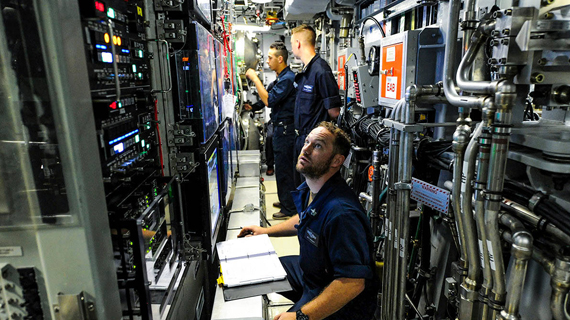Shock-Isolated Multi-Bay Enclosures for Next-Generation Naval Radar
A cutting-edge U.S. Navy radar program (AN/SPY-6 family) required electronics cabinets that could survive the massive shock forces of shipboard operations while cooling high-power components. The challenge was to house a complex Air and Missile Defense Radar and its Enterprise Air Surveillance Radar (EASR) modules in a multi-bay enclosure that meets naval shock standards. Such shipborne radars must endure the Navy’s most severe shock test (MIL-S-901D barge blast) without performance loss, and also prevent electromagnetic interference with other systems (MIL-STD-461 compliance).
Solution: Optima Stantron delivered an “MB” Series Modular Bolt-Together cabinet system with shock-isolation mounts on each bay. The weld-free modular design eliminated stress points, allowing the cabinet to absorb extreme shock vibrations instead of transmitting them to sensitive radar electronics. Each bay was equipped with integrated heat exchanger units to dissipate heat from processors and RF gear. The enclosure’s aluminum framework provided a strength-to-weight advantage, and gasketing ensured shielding effectiveness for EMI control.
• Multi-bay, expandable design: Cabinets bolt together to accommodate radar modular assemblies across an entire ship set.
• Shock qualification: Proven to withstand heavyweight shock blasts per MIL-S-901D naval standards, using isolators that protect internal equipment from sudden impact.
• Thermal management: Built-in heat exchangers and airflow channels keep high-density electronics cool under mission conditions.
• EMI/EMC compliance: Fully gasketed and grounded construction meets MIL-STD-461 for electromagnetic compatibility, preventing interference with other combat systems.


